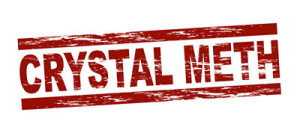 Meth addiction refers to an addiction to the psychoactive drug methamphetamine. Methamphetamine has a few medicinal uses but is mostly used as a recreational drug. It is highly addictive and frequent use will lead to severe dependence and eventually death.
Meth addiction refers to an addiction to the psychoactive drug methamphetamine. Methamphetamine has a few medicinal uses but is mostly used as a recreational drug. It is highly addictive and frequent use will lead to severe dependence and eventually death.
Meth can be prescribed by physicians for the treatment of ADHD, obesity, narcolepsy and persistent depression. When used in low doses, meth has a stimulating effect that increases alertness, concentration and energy. When used medicinally, meth is distributed under the brand name Desoxyn. It is a highly controlled drug due to its potential for abuse and meth addiction.
Meth addiction is initially fueled by meth’s stimulating and euphoria-inducing effects. Higher doses of the drug will produce a manic state where users experience euphoria, increased self-esteem and increased sex drive. When used recreationally, it goes by the names “ice”, “crystal meth”, “glass”, “crank” and “speed”, among others.
Meth Effects
The list of side effects of meth addiction and use is very long. The drug affects all aspects of functioning with increasingly negative effects. Severe tooth decay and loss (“meth mouth”), face sores caused by skin picking (“crank bugs”), and hair pulling are three obvious outward signs of chronic meth use. Depression, heart damage, psychosis, violent behavior and anxiety are just a few more of meth addiction side effects.
Meth addiction over time will result in permanent brain damage, memory loss, attention disorders and poor judgment. It also appears to be associated with the development or acceleration of Parkinson’s disease.
Methods of Meth Use
Injecting meth is the fastest way to get the largest amount of the drug into the body all at once. An extreme “rush” is experienced within seconds of injecting the drug. Injecting meth brings with it all the same risks and complications that injecting other recreational drugs does. Risks include contracting transmittable viruses, developing bacterial infections, death through overdose, embolism, collapsed veins and many more.
Smoking meth is a common method of ingestion. Smoking is usually done with a glass pipe but can also be accomplished using other materials such as foil or light bulbs.
Snorting meth is a method of ingestion that is not as commonly used because it takes the body a little longer to absorb the drug than injecting or smoking.
Insertion through the anal or vaginal cavities is neither commonly used nor well researched. This method of ingestion is referred to as “plugging”, “hooping” and “shafting”, among other names.
Chronic Meth Use
Meth addiction develops quickly and is very difficult to treat. It is a serious addiction that damages every aspect of one’s body. A famous public campaign called “Faces of Meth” had much success in drawing attention to and visually educating the public on the negative effects of meth addiction.
Treatment for meth addiction should be facilitated by professionals in a drug treatment center. Long-term treatment is necessary as the withdrawal period from meth addiction can last up to one year. A few medications have shown some success in treating meth addiction much like methadone is used in treating heroin addiction. Drugs such as dextroamphetamine, indatraline, fluoxetine, imipramine, Topiramate, phentermine and modafinil have been used to some extent by treatment professionals around the world.
Withdrawal from Meth Addiction
Meth addiction withdrawal is typically not dangerous but it can continue for up to one year. Withdrawal symptoms include complaints of fatigue, depression, anxiety, restlessness and agitation, excessive sleeping, vivid dreams and suicidal thoughts. The number and severity of withdrawal symptoms varies depending on the user’s specific metabolism and the extent of the meth addiction. Some users will experience flashbacks and schizophrenia-like symptoms such as psychosis during the withdrawal period. Medications such as baclofen, bupropion, Modafinil, Ibogaine, Mirtazapine and aripiprazole can sometimes be used to ease withdrawal symptoms.

